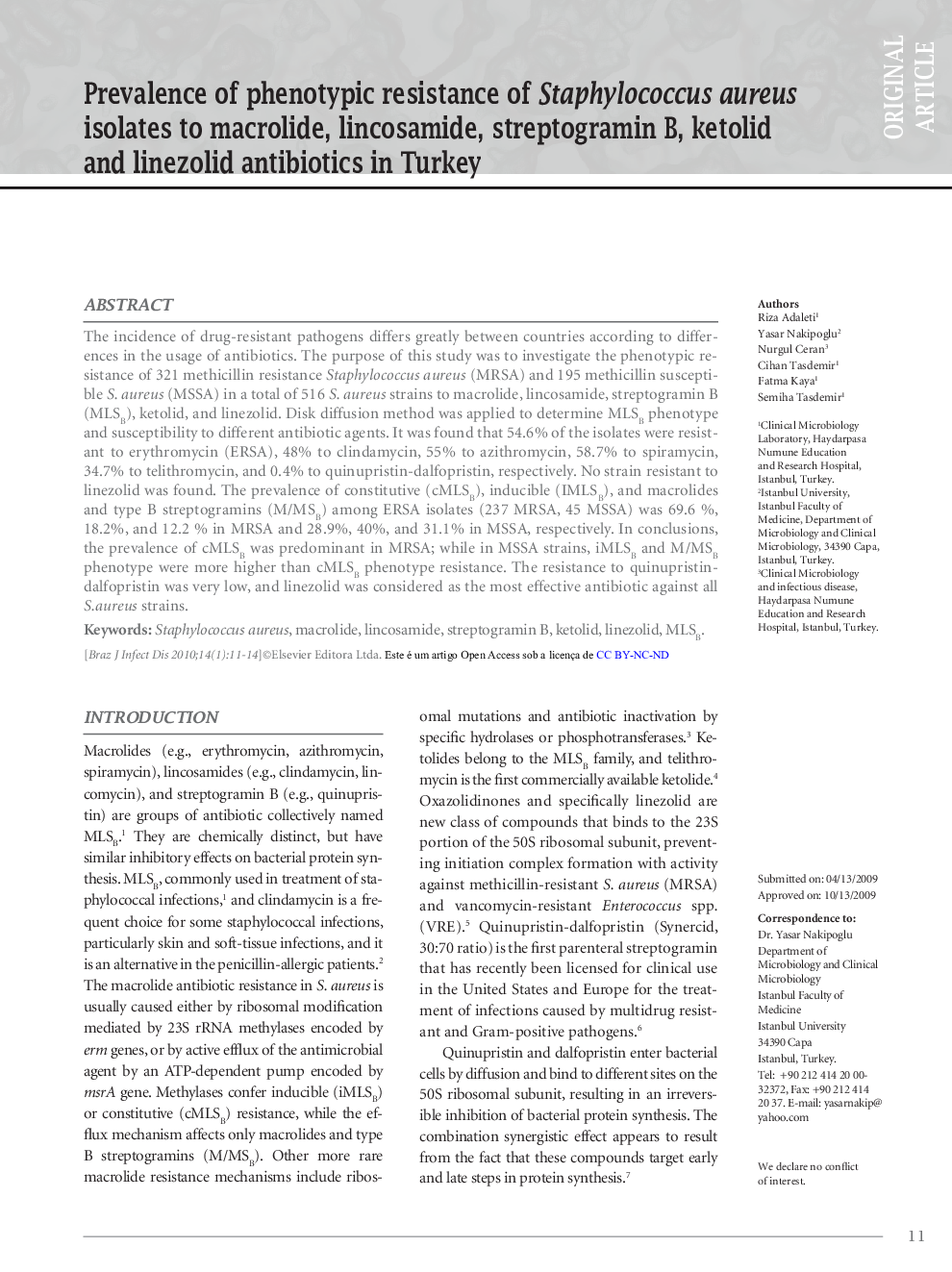| Article ID | Journal | Published Year | Pages | File Type |
|---|---|---|---|---|
| 3344559 | The Brazilian Journal of Infectious Diseases | 2010 | 4 Pages |
The incidence of drug-resistant pathogens differs greatly between countries according to differences in the usage of antibiotics. The purpose of this study was to investigate the phenotypic resistance of 321 methicillin resistance Staphylococcus aureus (MRSA) and 195 methicillin susceptible S. aureus (MSSA) in a total of 516 S. aureus strains to macrolide, lincosamide, streptogramin B (MLSB), ketolid, and linezolid. Disk diffusion method was applied to determine MLSB phenotype and susceptibility to different antibiotic agents. It was found that 54.6% of the isolates were resistant to erythromycin (ERSA), 48% to clindamycin, 55% to azithromycin, 58.7% to spiramycin, 34.7% to telithromycin, and 0.4% to quinupristin-dalfopristin, respectively. No strain resistant to linezolid was found. The prevalence of constitutive (cMLSB), inducible (IMLSB), and macrolides and type B streptogramins (M/MSB) among ERSA isolates (237 MRSA, 45 MSSA) was 69.6%, 18.2%, and 12.2% in MRSA and 28.9%, 40%, and 31.1% in MSSA, respectively. In conclusions, the prevalence of cMLSB was predominant in MRSA; while in MSSA strains, iMLSB and M/MSB phenotype were more higher than cMLSB phenotype resistance. The resistance to quinupristindalfopristin was very low, and linezolid was considered as the most effective antibiotic against all S.aureus strains.
